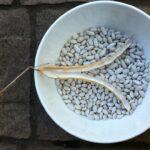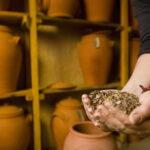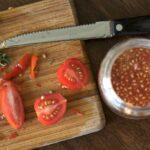
Harvesting vegetable seeds from your garden is a great way to save money and promote sustainability. By collecting and saving seeds from your favorite vegetables, you can grow them again the following year, reducing the need for purchasing new seeds. This not only saves you money, but also ensures you have access to a steady supply of fresh, healthy produce.
In this guide, we’ll discuss the basics of harvesting vegetable seeds, including what you’ll need, how to choose the best seeds, and how to properly store them for future use.
Harvesting Vegetable Seeds
What You’ll Need:
- A garden with mature vegetables
- Clean containers or envelopes to store the seeds
- Labels to keep track of the variety and date collected
- A clean, dry workspace
- Scissors or garden shears
- A sieve or colander
Step 1: Choose the Right Vegetables
When it comes to harvesting vegetable seeds, not all vegetables are created equal. Some vegetables, such as tomatoes and peppers, have seeds that are relatively easy to harvest and store. Others, like cucumbers and zucchini, have seeds that are more challenging to collect and preserve. To maximize your success, choose vegetables that are well-suited to seed harvesting.
Step 2: Harvest the Seeds
Once you’ve chosen the right vegetables, it’s time to harvest the seeds. The process of harvesting vegetable seeds will vary depending on the type of vegetable you’re working with, but generally involves removing the seeds from the fruit or vegetable, cleaning them, and allowing them to dry.
For vegetables like tomatoes and peppers, simply cut the fruit open, scoop out the seeds, and place them in a container to dry. For vegetables like cucumbers and zucchini, you’ll need to extract the seeds from the flesh of the fruit. To do this, cut the fruit open, scoop out the seeds and flesh, and place the mixture in a bowl of water. The seeds will sink to the bottom while the flesh will float to the top. Pour off the floating debris, strain the seeds through a sieve or colander, and place them in a container to dry.
Step 3: Dry the Seeds
Once you’ve harvested and cleaned your seeds, it’s important to allow them to dry completely before storing them. This will help to prevent mold and ensure that the seeds remain viable. Simply spread the seeds out on a clean, dry surface and let them sit for a few days until they are completely dry.
Step 4: Store the Seeds
Once the seeds are dry, it’s time to store them. To ensure the longevity of your seeds, it’s important to store them in a cool, dry place. Consider using airtight containers or envelopes to keep the seeds protected. Label the containers with the variety and date collected to help you keep track of your seeds.
Step 5: Plant the Seeds
The next spring, it’s time to plant your saved seeds. Simply prepare your garden beds, sow the seeds, and watch your plants grow!
Conclusion
Harvesting vegetable seeds is a great way to save money and promote sustainability in your garden. With the right tools and a bit of know-how, anyone can harvest and store vegetable seeds for future use. So go ahead, give it a try, and enjoy the benefits of growing your own fresh, healthy produce.
Keywords: vegetable seeds, save money, sustainability, garden, mature vegetables, clean containers, envelopes, labels, clean workspace, scissors, garden shears, sieve, colander, tomatoes, peppers, cucumbers, zucchini
Check out Little Tree Food Forest for articles on food forests and homesteading.
Check out FoodieScapes for articles on growing, fermenting and preserving food.










